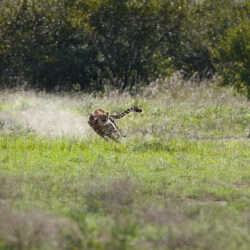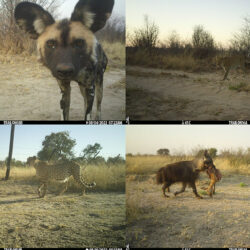A Dog’s Nose Always Knows
-

- by Brandy Morenko Campbell April 19, 2021
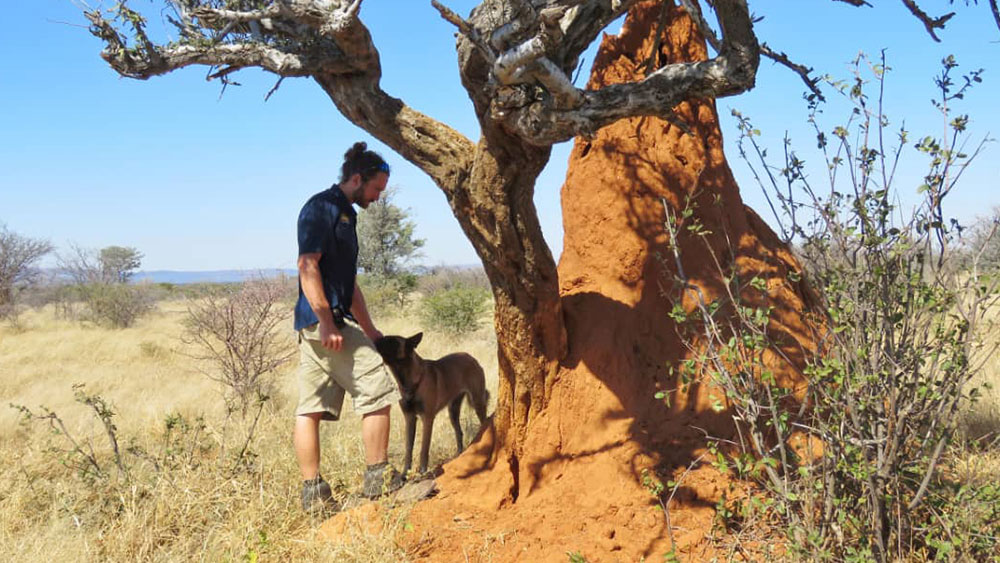
Summary of Detection Success of Cheetah Scat by Dog-Human and Human-only Teams in a Semi-Arid Savannah.
Counting cheetahs in the wild is not easy. They have very large home ranges and are found sparsely across the landscape, but understanding their population numbers, habitat use, and how it changes over time is critical to managing conservation efforts. One method used to provide that information is to look for the evidence they leave behind. In fact, cheetahs drop little piles of data and evidence right from their behind! Scat, or fecal droppings, can provide researchers with important genetic, hormonal, nutritional, location, and gender information. Dogs have been successfully trained to find the scat of a variety of species including cheetahs. And while scat detection dogs are very good at finding species specific scat, they can be expensive in comparison to other methods such as camera traps and human searchers. To improve the success of scat detection dogs it is important to know the factors that influence the dog’s work for example the size of the search area or weather.

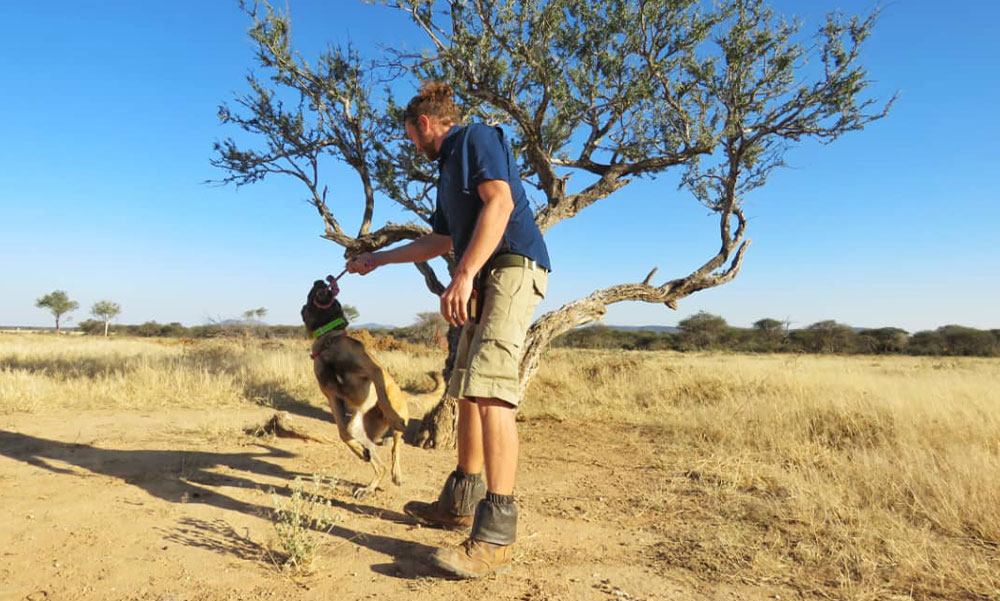
CCF researchers recently evaluated scat searches of a scat detection dog team to determine how different search patterns, weather and environment fluctuations, affected the outcome and how the team performance to a team with human searchers. Scat samples from captive cheetahs were randomly placed throughout the landscape on fixed transect lines with varying types of vegetation during the dry season. Then, they put the dog and human detection teams to the test to find the cheetah scat mixed in among the shrubs and other animal scat.
They were able to confirm, as suspected, that dogs are much more successful in finding cheetah scat than humans. In this study, the trained cheetah scat detecting dog found 93.3% of the scat samples, which was 3.5 times as many samples as the human scat detectors. This study also confirmed that dogs are much more accurate in differentiating cheetah scat from another animal’s scat. The scat detection dog correctly identified cheetah scat 100% of the time, while the human correctly identified cheetah scat 56% of the time.
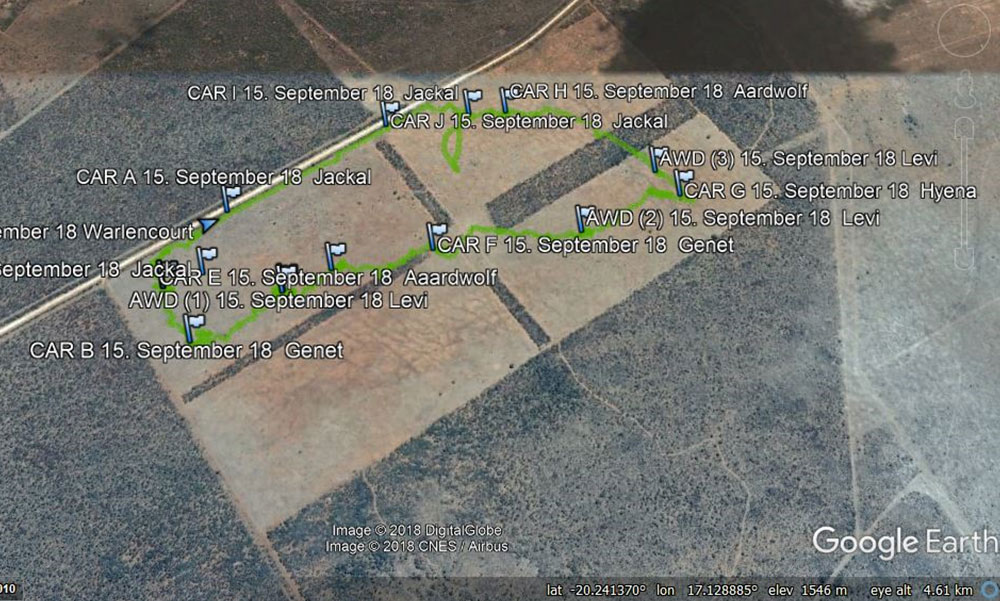
Regardless of the vegetation or weather conditions present during the searches, both the dog and human teams were able to maintain stable detection rates. In addition, this study highlighted that a dog is ultimately more successful when given more time and has smaller search grids to work within.
This research reinforces that search strategies and the tools you use can make a big difference in the quality of data you collect and subsequently interpret. Dogs have a substantial advantage over human scat searchers, because of their highly acute sense of smell, but the resources needed to train, maintain, and handle the dogs needs to be factored into research costs.
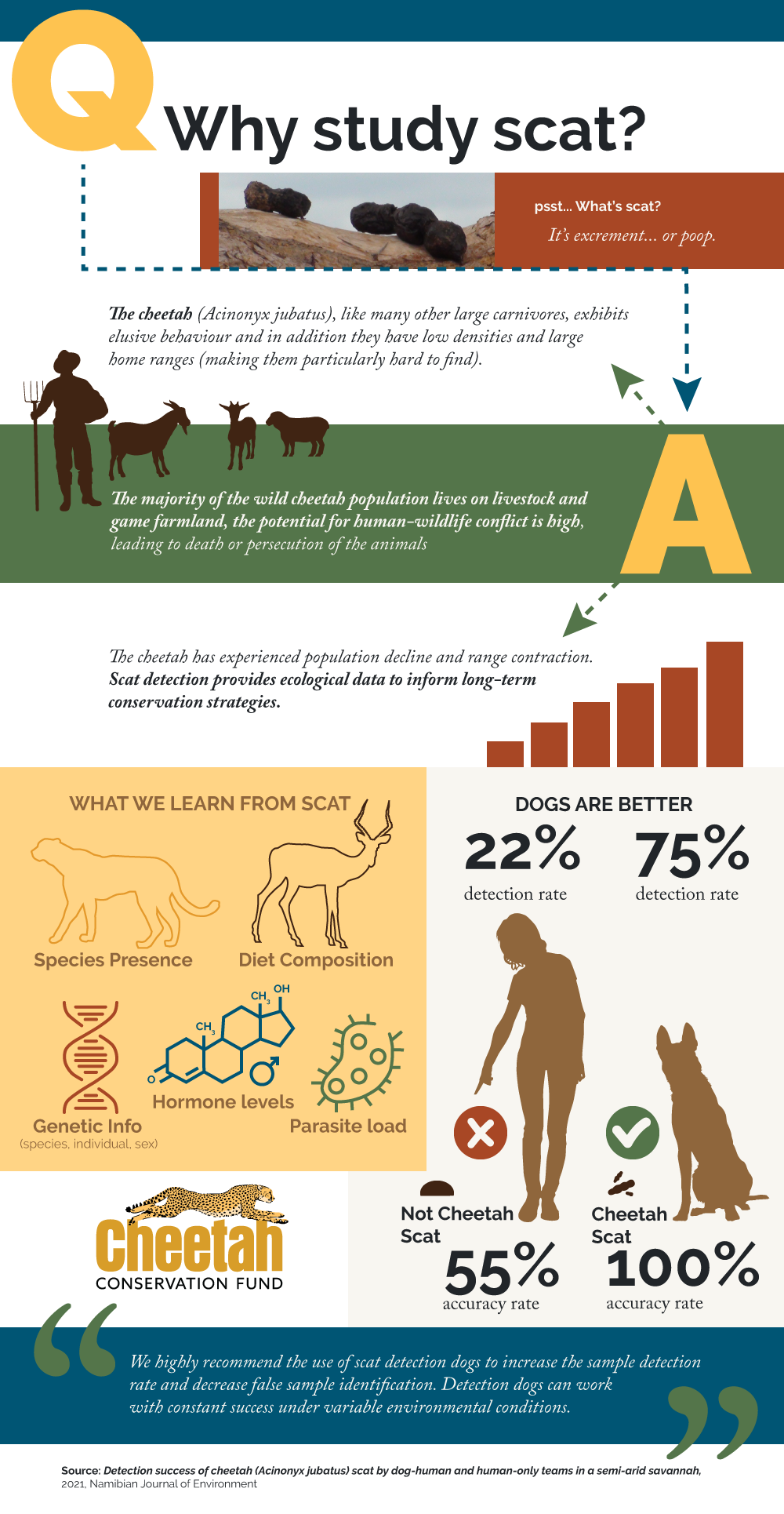
Related Reading
-
October 15, 2024
The Ecology of the Landscape Down to the Smallest Part

